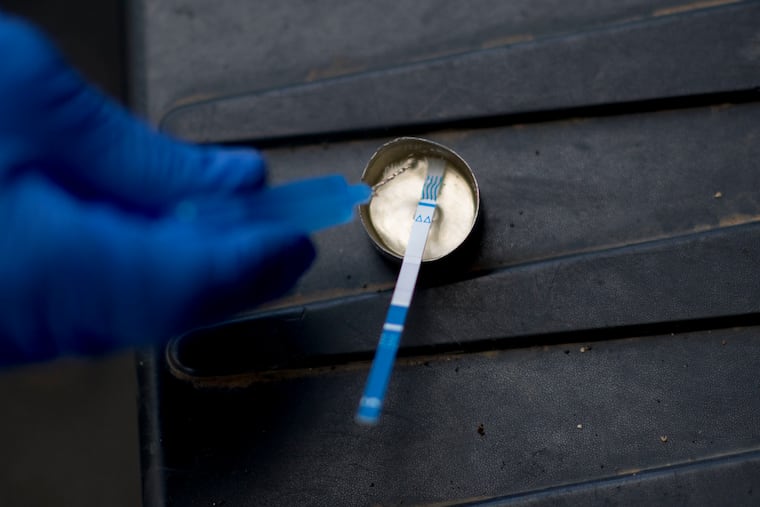Exposure to fentanyl doesn’t kill but misinformation does | Opinion
Why the scary stories you’ve heard about the drug have serious public health implications.

Over the weekend, during an interview with President Trump, Fox News host Jeanine Pirro said, “There was enough fentanyl seized by them [Immigration and Customs Enforcement] last year that could kill every American in this country.” That’s a scary statement and one that is screaming for more context — how much fentanyl could kill a person? Could it harm people who aren’t using drugs? — which unfortunately, Pirro didn’t offer.
That same weekend, a group of people in Chico, California overdosed from using fentanyl so strong that police alleged that two of the officers who responded to the event overdosed just from being close to it. The reports failed to mention that mere exposure to fentanyl is extremely unlikely to cause an overdose.
It’s statements like these that make people think that fentanyl is everywhere, putting everyone at risk — not only people who use heroin but their friends, family, law enforcement, and first responders.
That is the terrifying story that we hear about fentanyl. And it is just not true.
What is fentanyl?
Fentanyl is an umbrella name that is used colloquially to refer to a few synthetic opioids — one of them is actually called fentanyl. Fentanyl is a potent substance and often people describe it as 50 times more powerful than heroin. President Trump called fentanyl “ultra-lethal.” While it is true that using the wrong dose of fentanyl — using too much — can be lethal, almost every operating room in America uses fentanyl every day without problems. In fact, fentanyl is the most used opioid in anesthesia during surgery. Millions of people every year get fentanyl in hospitals, and they do not overdose or develop an addiction.
So how dangerous is fentanyl?
In 2017, fentanyl and its analogues were involved in 84 percent of the 1,217 overdose deaths in Philadelphia.
It would be easy to see that statistic as proof that fentanyl is “ultra-lethal.” But like any drug, fentanyl in the correct dose is not harmful at all. ( The problem arises when people who use heroin buy product that includes fentanyl in varying degrees. Thinking that they are using heroin, a less potent drug, they use a dose that is too large. That’s dangerous because a deadly dose of fentanyl is much smaller than a deadly dose of heroin. Before you take a doctor-ordered drug, you probably check to make sure that you are taking the right dose. People who use drugs bought in an illicit market don’t have that option — that’s the danger and that’s why fentanyl kills so many people. (This is why some people advocate for prescription heroin for people in addiction)
What can people who use heroin do to stay safe from fentanyl?
According to a February 2018 study conducted by researchers from Brown University and Johns Hopkins University, people who use heroin are concerned about fentanyl want to be able to test their drugs for fentanyl, and would change their drug-use behavior if they knew there was fentanyl in the heroin — sometimes discarding the product. A new Brown University study published last week confirmed these findings.
Testing strips are accurate and cost about $1 a piece — and they save lives. Unfortunately, because of the broad way in which drug paraphernalia state laws are written, it is unclear if distributing and possessing fentanyl testing strips is illegal.
Can I overdose from touching fentanyl?
No. If fentanyl was so easily absorbed, one would suspect we’d see more people rubbing heroin onto their skin instead of injecting it — avoiding risk of wounds and infections. According to the American College of Medical Toxicology and the American Academy of Clinical Toxicology, breathing in fentanyl “is not a practical concern,” skin contact is “unlikely to cause opioid toxicity,” and “toxicity cannot occur from simply being in proximity to the drug.”
Some point to incidents in which law enforcement or prison guards became ill after alleged exposure as proof that fentanyl exposure is so dangerous. However, experts argue that the symptoms in these incidents are psychogenic — the result of mass panic.
Why is this misinformation so problematic?
At the end of the day, fentanyl is just a substance. We know its properties — how strong it is, how long it acts, pathways of exposure. Misinformation about fentanyl can have serious public health implications. Consider this: Public health professionals, including the surgeon general of the United States, have spent months encouraging citizens to carry naloxone to help reverse overdoses. But if people think that they are at risk by simply getting close to a person who overdosed, why would they take that risk? The false information is working against officials' best efforts to encourage people to be good citizens.